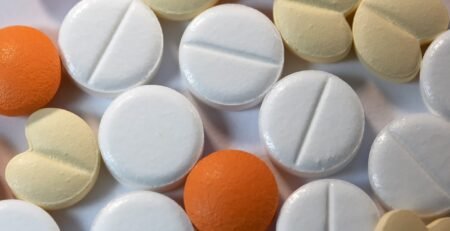Tablet manufacturing is a complex process involving the interaction of numerous physical and chemical factors. One of the most crucial elements of this process is the quality of the granules. This significantly determines how well the material can be compacted, pressed, and processed into stable, uniform tablets. Precise granulation control is therefore a central component of any modern pharmaceutical production. Granule quality not only influences the physical properties of the tablets but also the efficiency of the tablet press, the production speed, and ultimately, the overall economic viability of the process.
Granules produced by wet or dry granulation primarily serve to improve the flow properties, compressibility, and homogeneity of a powder. These parameters are crucial for the reproducibility of tablet weight and the uniform distribution of the active ingredient. Insufficient granule quality can lead to significant problems with tablet compression: variations in tablet weight, uneven hardness, lamination, or breakage are typical signs of inadequate granulation.
A key quality characteristic of the granules is the particle size distribution. Homogeneous granules with an optimal particle structure promote consistent filling behavior in the dies of the tablet press. Particles that are too fine tend to produce dust and can impair dosing accuracy, while particles that are too coarse negatively affect the compaction behavior and lead to insufficient tablet hardness. Granule density and porosity are equally important factors that determine how much the mass can be compacted under pressure. Granules that are too dense make venting during compression difficult and can cause edge chipping or tablet breakage.
The flow properties of the granules directly influence the filling speed of the dies and thus the pressing performance. Poor flow properties lead to uneven fill volumes, which in turn result in weight variations and variable tablet hardness. Good flowability ensures a constant feed to the die and enables higher pressing speeds with consistent quality. For this reason, the correct moisture content of the granules plays a key role. Excessive residual moisture can impair flow and lead to clumping, while insufficient moisture reduces adhesion between the particles and weakens the tablet structure.
Another important aspect is the binder distribution within the granules. Binders ensure the necessary cohesion between the particles and significantly influence tablet strength. Unevenly distributed binders lead to inhomogeneity, which can manifest as tablets with uneven hardness and brittleness. Therefore, in industrial practice, great emphasis is placed on controlled mixing time, moisture content, and drying temperature to guarantee a stable and reproducible granule structure.
Press efficiency is closely linked to granule quality. If the granules have an ideal particle size distribution and flowability, the tablet press can be operated at higher speeds without compromising tablet quality. Furthermore, high-quality granules reduce wear on punches and dies because uniform forces are applied during the pressing process and abrasive particles are avoided. Conversely, poor granule quality increases mechanical stress on the machine, causes disruptions in material flow, and leads to more frequent production interruptions.
Another parameter influenced by granule quality is tablet hardness. This is a key quality criterion that determines the handling, packaging, and release profile of the tablet. Optimal granules result in uniform compaction, producing tablets with a stable structure that still exhibit the desired disintegration time and solubility. Conversely, insufficiently controlled granulation can lead to over-compaction, resulting in tablets that are hard but difficult to dissolve – a critical factor, especially for immediate-release formulations.
The energy consumption of the tablet press is also influenced by the granule quality. High-quality granules with optimal compressibility require lower pressing forces, which reduces energy consumption and increases production efficiency. Furthermore, heat generation during the pressing process is minimized, which is crucial for temperature-sensitive active ingredients. A uniform granule structure also contributes to dust reduction, improving not only product quality but also workplace safety.
Modern pharmaceutical technology increasingly relies on process analytics (PAT) and real-time monitoring of granulation. The use of sensors and automated control systems allows parameters such as moisture, particle size, and density to be continuously monitored and adjusted. This enables the early detection and correction of fluctuations in the granulation process before they negatively impact tablet compression.
Granule quality forms the foundation for efficient tablet production. It influences all subsequent process steps – from flowability and compressibility to the stability and release of the finished tablet. Only through precise control of granulation parameters can reproducible results, stable tablet properties, and high compression efficiency be achieved. In an era where pharmaceutical companies increasingly focus on process optimization, energy savings, and product quality, granule quality is becoming a crucial competitive factor. It is not merely a technical parameter, but a key indicator of quality, cost-effectiveness, and reliability in tablet manufacturing.




